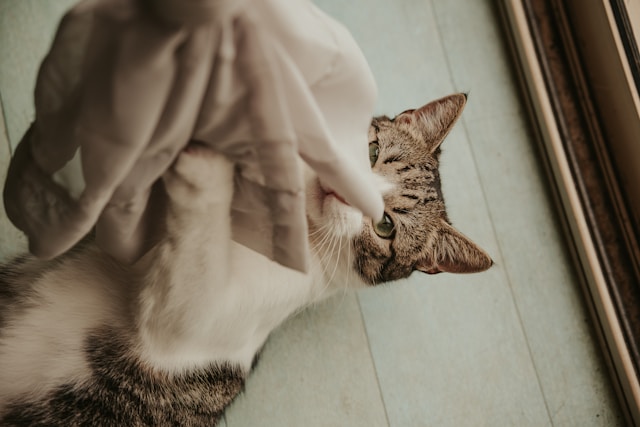Every pet has its own unique personality, but when your furry companion is especially timid or nervous, it can be challenging to help them feel at ease. Whether you’ve adopted a rescue animal or you’re simply dealing with a naturally introverted cat or dog, learning how to socialize a shy pet is key to helping them live a happier, more confident life.
Shyness in pets can stem from a variety of causes past trauma, lack of early socialization, or genetic predisposition but with patience, consistency, and compassion, even the most fearful animals can learn to trust and thrive. This guide offers practical, step-by-step tips for shy dogs or cats, focusing on positive reinforcement and building confidence at your pet’s pace.
Understanding Shy Pet Behavior
Before diving into techniques for socialization, it’s important to understand what shyness looks like in pets.
Common Signs of a Shy or Fearful Pet:
-
Hiding behind furniture or in corners
-
Trembling, pacing, or panting
-
Avoiding eye contact or people
-
Flattened ears, tucked tail, or low body posture
-
Growling or hissing when approached
It’s crucial to note that shyness is not the same as aggression. Many fearful pets act defensively because they feel unsafe. Recognizing these early warning signs will help you approach your pet in a way that builds trust instead of fear.
Creating a Safe and Calm Environment
The first step in helping a shy pet is creating an environment where they feel secure. Without this foundation, no amount of training or exposure will work effectively.
Key Elements of a Safe Space:
-
Designated quiet zone: Set up a comfortable area with a bed, crate, or blanket where your pet can retreat without disturbance.
-
Consistent routine: Feed, walk, and play with your pet at the same times daily to reduce anxiety.
-
Minimize noise and chaos: Loud environments can increase stress. Keep things calm, especially during early socialization.
You might also consider calming aids like pheromone diffusers, soft background music, or anxiety vests, especially for pets with heightened sensitivity.
Positive and Gradual Exposure
One of the most effective methods for helping a fearful pet is slow, positive exposure to new people, animals, and environments.
Tips for Socializing a Shy Pet:
-
Go slow: Introduce one new stimulus at a time. For example, have a quiet visitor sit calmly while offering treats.
-
Let the pet approach: Avoid forcing interaction. Allow your pet to come forward when they feel ready.
-
Use high-value treats: Reward every small act of bravery with praise or food to create positive associations.
-
Keep sessions short: Short, successful sessions are more productive than long, overwhelming ones.
Whether you’re socializing rescue animals or helping a puppy or kitten adjust, it’s essential to follow your pet’s comfort level and avoid overstimulation.
Confidence-Building Activities
Helping a shy pet isn’t just about exposing them to new things it’s also about boosting their self-assurance through bonding and positive reinforcement.
Confidence Builders:
-
Training games: Teach simple commands like “sit,” “stay,” or “touch.” These build structure and give your pet a sense of control.
-
Interactive play: Use toys like feather wands for cats or tug ropes for dogs to encourage engagement in a low-pressure way.
-
Gentle handling: Gradually increase physical contact, starting with short sessions of petting or brushing if your pet allows it.
-
Exploration walks: For shy dogs, walks in quiet areas provide mental stimulation and confidence as they explore the world.
Building confidence in pets takes time, but each positive experience contributes to long-term behavioral growth.
Introducing Other People and Animals
Once your shy pet is comfortable with you and their environment, you can begin introducing them to new people or other pets.
Introducing People:
-
Have guests ignore the pet at first let the pet approach if they feel comfortable.
-
Avoid direct eye contact and loud voices, which may be perceived as threatening.
-
Offer treats and toys to visitors so they can create a positive association.
Introducing Other Pets:
-
Begin with short, supervised meetings in neutral territory.
-
Use a leash or barrier at first for safety.
-
Look for signs of stress, and separate if either pet shows fear or aggression.
-
Gradually increase the duration and closeness of the interaction.
Socializing a shy pet with others should be done gradually, without pressure, to avoid setbacks.
When to Seek Professional Help
In some cases, your pet may need support beyond what you can offer at home. If your pet displays signs of extreme anxiety or fear-based aggression, it may be time to consult a professional.
Signs You May Need a Trainer or Behaviorist:
-
Aggression toward people or animals
-
Inability to relax, even in safe settings
-
Lack of progress after weeks or months of consistent effort
-
Compulsive behaviors like excessive licking, pacing, or chewing
A certified pet behaviorist or trainer who specializes in fear-based behavior can develop a customized plan tailored to your pet’s needs. Many also offer socialization programs for shy pets to help them build confidence in a controlled, supportive environment.
Final Thoughts: Patience is Everything
Helping a shy or fearful animal become more social isn’t something that happens overnight but it’s one of the most rewarding journeys you can take as a pet owner. With love, consistency, and positive reinforcement, you can make a huge difference in your pet’s emotional wellbeing.
Socializing rescue animals or any shy pet requires empathy and a commitment to progress over perfection. Celebrate every small win, be patient during setbacks, and remember: your efforts today will build a lifetime of trust, companionship, and joy.

